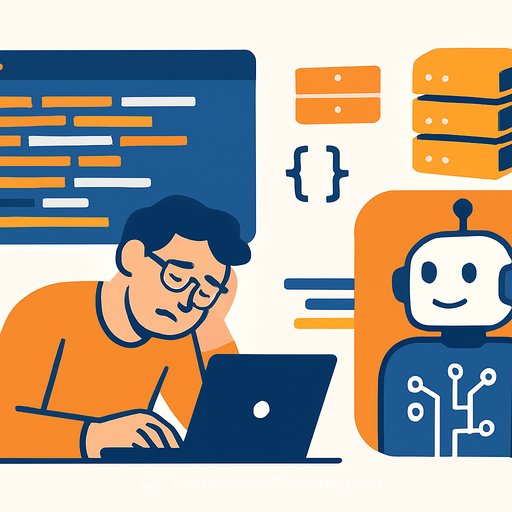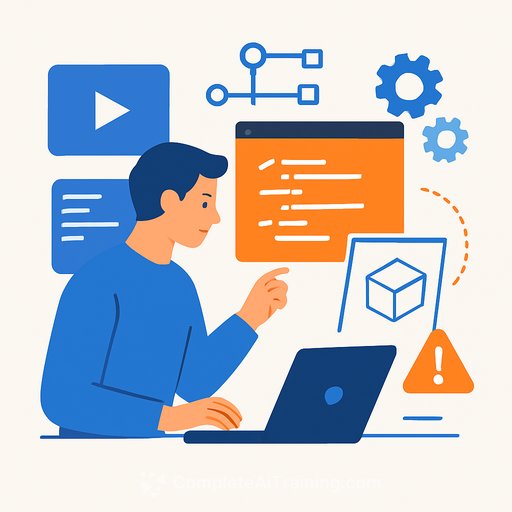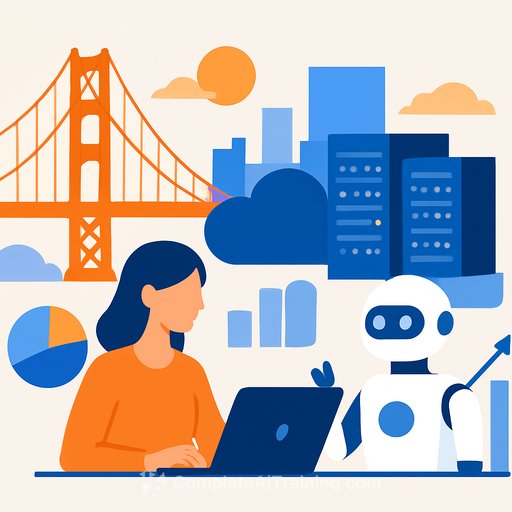Rethinking AI in Enterprise and Blockchain Development
A recent study from Model Evaluation & Threat Research (METR) revealed that AI coding assistants can actually slow down experienced developers by 19% when working on familiar codebases. This slowdown highlights the friction caused by switching between tools and context. The concept of Conscious Stack Design™ (CSD) promotes intentional, context-aware AI integration—using AI assistants mainly for scaffolding tasks while preserving developer flow on legacy code.
This is especially relevant in blockchain development, like with BSV, where precision and security are critical. Here, AI should be calibrated to support documentation and testing rather than core consensus logic, where errors can have serious consequences.
Why Do Experienced Developers Slow Down with AI?
Veteran developers develop detailed mental models of their projects, enabling them to work efficiently with minimal cognitive load. AI assistants disrupt this fluency in two main ways: context switching and evaluation overhead. Each AI suggestion requires reading, interpretation, and validation against the developer’s intent. Even if suggestions are mostly correct, confirming variable names, API contracts, and edge cases takes time. These small validation steps add up and often outweigh the time saved through autocomplete.
Interestingly, the METR study found a perception gap: developers felt they worked 24% faster with AI, but objective measures showed a 19% slowdown. The AI makes coding feel easier—like editing rather than writing—but this masks the real review costs. Less experienced coders, who lack deep familiarity with codebases, tend to benefit from AI because their cognitive load decreases significantly, resulting in net gains even after validation.
Applying Conscious Stack Design™ to AI Adoption
Conscious Stack Design™ promotes harmony between tools, workflows, and human cognition. Adding AI without intent can fragment an established stack. The approach rests on three key principles:
- Align tools with task context: Use AI assistants mainly for greenfield development such as scaffolding new modules, generating tests, or creating documentation templates. For maintaining existing code, rely on native IDE features and keyboard-driven workflows.
- Establish clear “AI boundaries”: Define rules like “AI only for initial drafts” or “Disable AI in production branches.” Embed these policies into version control hooks or team guidelines to avoid disruptions.
- Monitor and iterate on AI resonance: Track metrics like code-review time, bug-fix rates, and developer satisfaction. If AI leads to longer reviews or more defects in certain areas, adjust usage accordingly. This feedback loop helps maximize benefits and minimize noise.
For example, a team following CSD might enable AI suggestions only for unit tests or prototyping new services, turning it off when working on critical legacy functions. This selective use preserves developer flow while still leveraging AI’s generative strengths.
What This Means for Blockchain Developers on BSV
Blockchain engineering involves high-stakes correctness, specific protocols, and tight coupling between smart contracts and consensus rules. The METR study’s insights have particular relevance here:
- Security and auditability: Mistakes in smart contracts can cause on-chain losses or vulnerabilities. AI-generated code requires rigorous formal verification and peer review. Each AI suggestion adds audit checkpoints, increasing validation time and reducing the appeal of quick code snippets.
- Protocol evolution: As BSV protocols change, even experts face unfamiliar interfaces. In these cases—similar to greenfield work—AI can generate boilerplate code for transaction parsing or RPC wrappers, benefiting both novices and veterans.
- Test and documentation acceleration: Instead of using AI for core contract code, teams can leverage it to auto-generate tests, API docs, or example integrations. This speeds onboarding and reduces manual effort while keeping critical code paths free of AI interference.
- Ecosystem collaboration: Open-source projects often attract contributors with varying experience. AI-driven style guides or linting can standardize code quality. However, maintainers should enforce stricter reviews for AI-assisted pull requests to protect protocol integrity.
Mapping AI use cases to blockchain development phases—innovation, deployment, maintenance—helps teams apply CSD principles to maximize productivity without adding overhead.
Building a Balanced AI-Augmented Developer Stack
Integrating AI tools into enterprise workflows requires more than flipping a switch. The METR study reminds us that even promising tech can hinder productivity when it clashes with established expertise. Here’s a practical roadmap based on Conscious Stack Design™:
- Audit current workflows: Identify where context switching and validation costs are highest. Which tasks are most tedious? Where do developers spend extra time?
- Pilot targeted AI interventions: Introduce AI in narrow, well-defined tasks like new component creation, test writing, or API client generation. Measure effects on cycle time and code quality.
- Codify AI usage policies: Set standards for when AI is enabled, how AI-generated code is labeled, and what review processes apply. Automate checks within CI/CD pipelines.
- Iterate with feedback loops: Use metrics such as mean time to repair and review durations alongside developer surveys to adjust AI boundaries. Aim to preserve flow and reduce noise.
- Educate all skill levels: Train developers on effective prompt crafting and AI tool configurations. Help junior engineers use AI safely and show seniors how to integrate suggestions efficiently.
AI coding assistants offer valuable potential—but only when integrated thoughtfully. Respecting human cognition, aligning tool use with specific tasks, and continuously refining AI boundaries will help enterprise and blockchain teams improve productivity. Sometimes, knowing when to disable AI is the smartest move.
For practical courses on AI tools and integration strategies, explore resources at Complete AI Training.
Your membership also unlocks:






